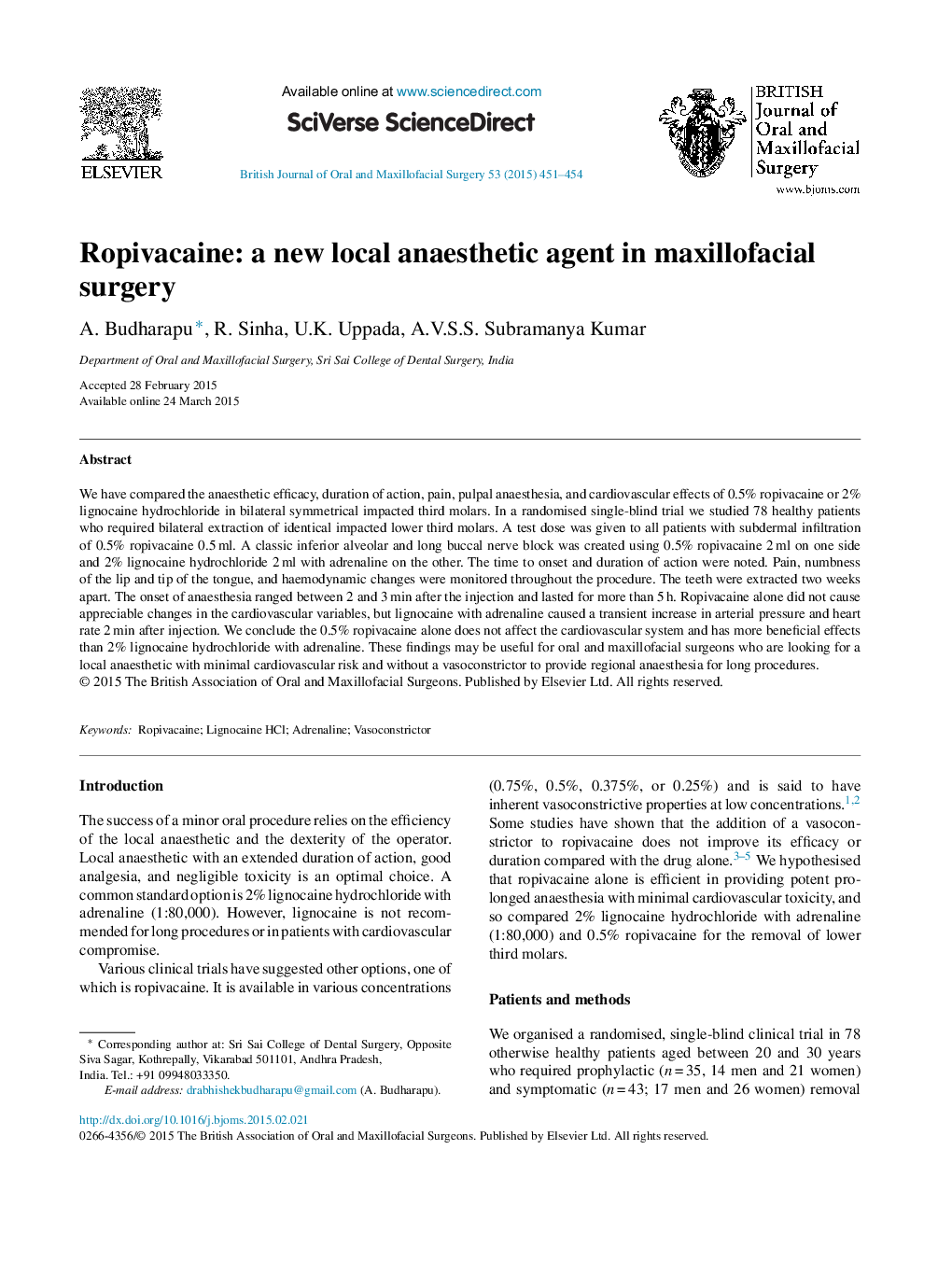| کد مقاله | کد نشریه | سال انتشار | مقاله انگلیسی | نسخه تمام متن |
|---|---|---|---|---|
| 3122899 | 1583712 | 2015 | 4 صفحه PDF | دانلود رایگان |
We have compared the anaesthetic efficacy, duration of action, pain, pulpal anaesthesia, and cardiovascular effects of 0.5% ropivacaine or 2% lignocaine hydrochloride in bilateral symmetrical impacted third molars. In a randomised single-blind trial we studied 78 healthy patients who required bilateral extraction of identical impacted lower third molars. A test dose was given to all patients with subdermal infiltration of 0.5% ropivacaine 0.5 ml. A classic inferior alveolar and long buccal nerve block was created using 0.5% ropivacaine 2 ml on one side and 2% lignocaine hydrochloride 2 ml with adrenaline on the other. The time to onset and duration of action were noted. Pain, numbness of the lip and tip of the tongue, and haemodynamic changes were monitored throughout the procedure. The teeth were extracted two weeks apart. The onset of anaesthesia ranged between 2 and 3 min after the injection and lasted for more than 5 h. Ropivacaine alone did not cause appreciable changes in the cardiovascular variables, but lignocaine with adrenaline caused a transient increase in arterial pressure and heart rate 2 min after injection. We conclude the 0.5% ropivacaine alone does not affect the cardiovascular system and has more beneficial effects than 2% lignocaine hydrochloride with adrenaline. These findings may be useful for oral and maxillofacial surgeons who are looking for a local anaesthetic with minimal cardiovascular risk and without a vasoconstrictor to provide regional anaesthesia for long procedures.
Journal: British Journal of Oral and Maxillofacial Surgery - Volume 53, Issue 5, May 2015, Pages 451–454
